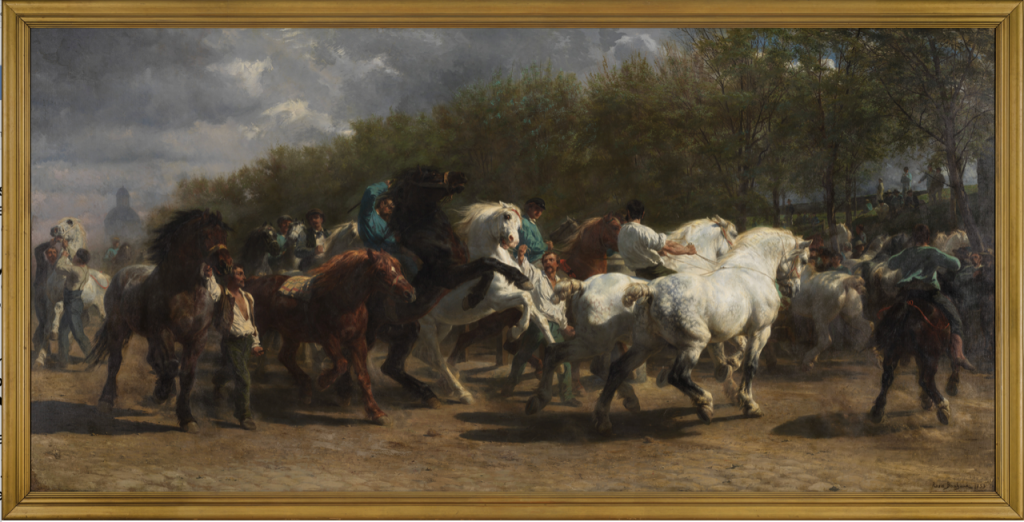
by Brooke Chilvers
French animalier artist and sculptress Rosa Bonheur (1822–1899) is not the only world-famous artist who fell into obscurity, only to be wildly resuscitated on the 200th anniversary of her birth. In addition to catalogs from two major museum exhibitions, art magazines and even the French TV guide published special editions devoted to her work and life, plus a flood of biographies in French and English, and even a novel about her friendship with Buffalo Bill in 1889. (www.grayssportingjournal.com/when-rosa-bonheur-met-buffalo-bill).
Although women were not allowed to attend the École des Beaux-Arts until 1897, Rosa was nevertheless the most commercially successful French artist of the 19th century. She was also the first French female ever to purchase her own château with her own hard-earned money, and the first female to legally convey her entire estate—all her artwork, property, and personal papers—to a woman outside of her family; American artist Anna Klumpke (1856–1942) was her end-of-life companion, responsible for preserving her legacy, which she did.
Yet Rosa’s only art education—her only education at all—was as a 13-year-old apprentice to her father, an impoverished painter of landscapes and portraits who’d known Corot and Goya. And, she turned to art only when it was agreed all around that she was hopeless as a seamstress.

Raymond Bonheur (1796–1849) had been the art teacher of Rosa’s mother, the lovely, musical Sophie Marquis, born of unknown parents and adopted by a wealthy Bordeaux merchant who confessed on his death bed to being her real father. Sophie married Raymond and bore four of his children—Rosa, Auguste, Isidore and Juliette, all of whom would become successful artists. Raymond seemed to care more about improving society than feeding his hard-up family, and abandoned them to become an Apostle of the Utopian Socialist movement, Les Saint-Simoniens, living celibately in their convent at Ménilmontant for several years.
Left in abject poverty, Sophie dropped dead from exhaustion (or possibly cholera) at age 36. Rosa was 11 years old. When Raymond married her awful stepmother nine years later, then died in 1849, Rosa moved for good into the household of her best friend since age 14, Natalie Michas. Natalie would be her companion and devoted attendant for the next 53 years. And the rest is feminist—and art—history.

Natalie ran the household, making it possible for Rosa to support everyone in comfort with her sustained flow of paintings, many of them large scale. She painted her horses, dogs, farm and barnyard animals, the roedeer and stag that roamed the forests, and her own exotic menagerie that included lions—most famously Fathma. Unfailingly, her work demonstrates not only her great knowledge of animal anatomy and behavior, but also of their eyes, as in her lion portrait, El Cid, that Rosa believed, was a reflection of their souls. She also painted the farmers, shepherds, and peasants who depended on animals and labored at their side.
